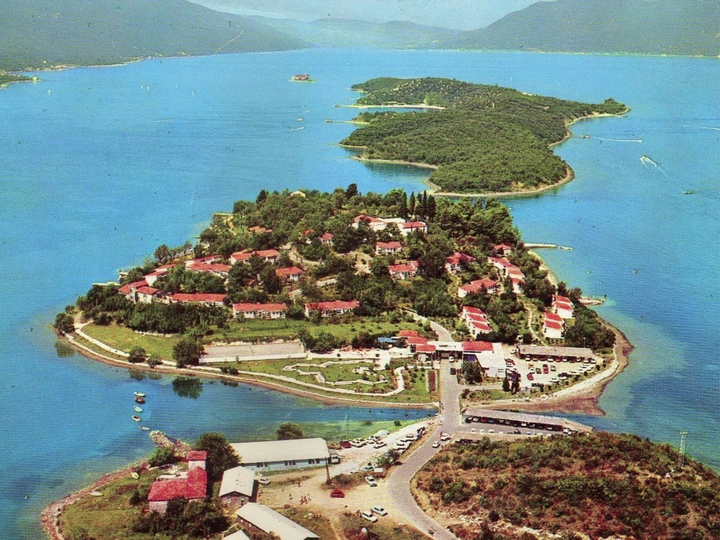From Tourist Resort to Surreal Housing

Savka Marenić(*1993)
graduated from the Faculty of Architecture and Urbanism at the Czech Technical University in Prague, and from the Faculty of Architecture at the University of Montenegro in Podgorica. Her master thesis titled Island of Education was based on the search for the identity of the islands of the Vltava River, with a focus on the exploration of Children's Island which is based in the center of Prague city. Her thesis was awarded an honorable mention.
In her practice, she connects architecture with public pedagogy, publishing, art, and intervention in public space. She worked as a curator and educator in the Norma space gallery collective, which was created as an immediate need for missing discussion about architecture. As part of the collective, she has organized and curated several exhibitions, workshops, and a series of lectures. As part of the series of lectures called Landscape (Ex)Change, she led a curatorial dialogue on issues of landscape and urban transformation of contemporary territories with four Swiss architects and urban planners ( Milica Topalović, Charlotte M.Barthes, Dubravka Sekulić, Robin Winogrond, CarolaAnton). She has participated in a number of art festivals, workshops, exhibitions, and competitions in Montenegro and the Czech Republic. She collaborated with a collective of artists and architects to prepare the winning art installation in Prague commemorating the artistic legacy of Jiřina Hauková and Jindřich Chalupecký, which should be realized in 2025. Her architectural projects were published in several architectural magazines ( ERA21, earch.cz, artalk.cz,superland.space). She is the founder of the brand 𝔣𝔞𝔦𝔯𝔦𝔢𝔰, creative textile practice for creating soft objects for adults and children. She often invites children to collaborate with her to create stories and rethink urban spaces. Currently, she works as an independent architect, organizes workshops for children, writes stories, zines, and sews textile objects.
Throughout the years, rapid urbanization has brought significant transformations on numerous islands in the Adriatic Sea, Montenegro. These changes have altered their traditional ways of life, positively and negatively impacting their fragile ecosystems. They have consistently been the most vulnerable sites becoming highly sought-after destinations for tourism resorts. The allure of island life has attracted human settlements for centuries, offering a sense of isolation, natural beauty, and connection to nature. Moreover, the islands historically served as essential locations for trade/exchange of products and played an important role in city defense systems.
The Island of Flowers (also known as the Island of St. Archangel Michael) in the Bay of Boka Kotor has gone through essential changes. From its ancient roots as the land of the Illyrians and Romans, it became the site of a monastery. In the 20th century, the island became a Yugoslavian tourist resort with specific architecture and landscape. However, the outbreak of war in Croatia in 1991 brought a drastic shift - the tourist settlement on the island was repurposed as a temporary refuge for families fleeing the conflict in Croatia. After the war's end, the once-thriving tourist resort gave way to a new reality - the island became a permanent home for the refugees, coexisting alongside the sacred monastery.
The proposed publication, through an autoethnographic approach and critical reflection of the island‘s transformation, aims to delve into its transition process, raising awareness about the underlying factors making it vulnerable, and the social and environmental consequences it faces. Through the narrative of its inhabitants (the refugees and the monastery's priests/workers), I aim to showcase their potential for shaping the island's future and contributing to the city's sustainability. I believe the myths and stories associated with a place, can contribute to a better understanding of the spaces.